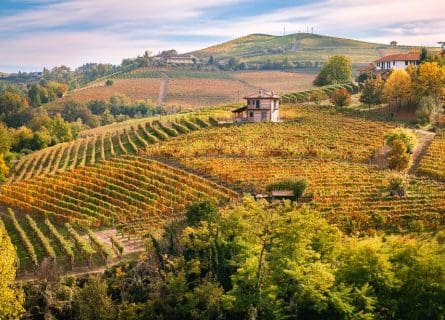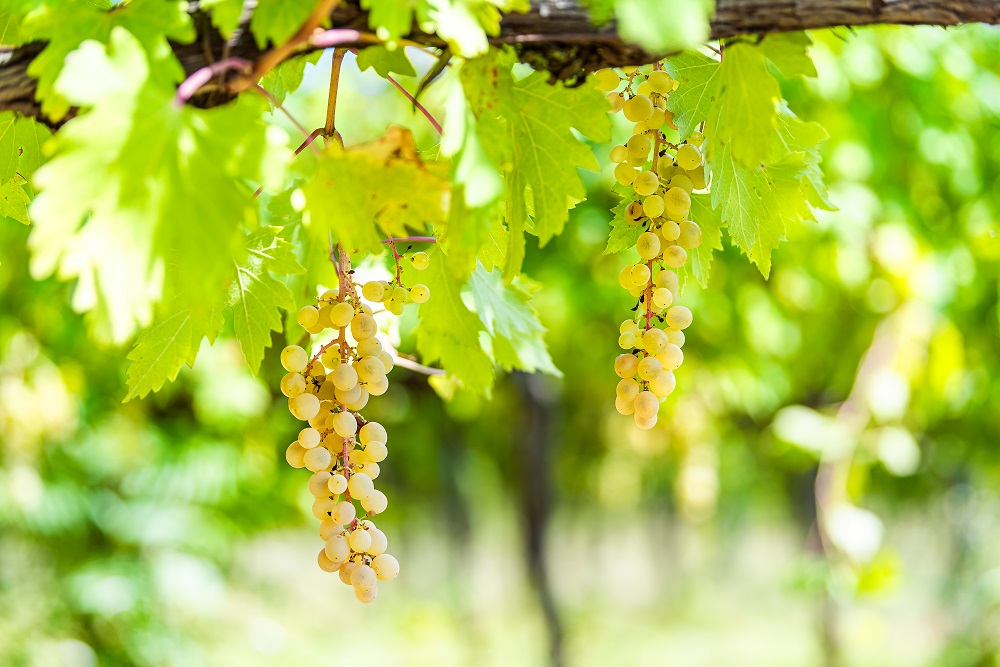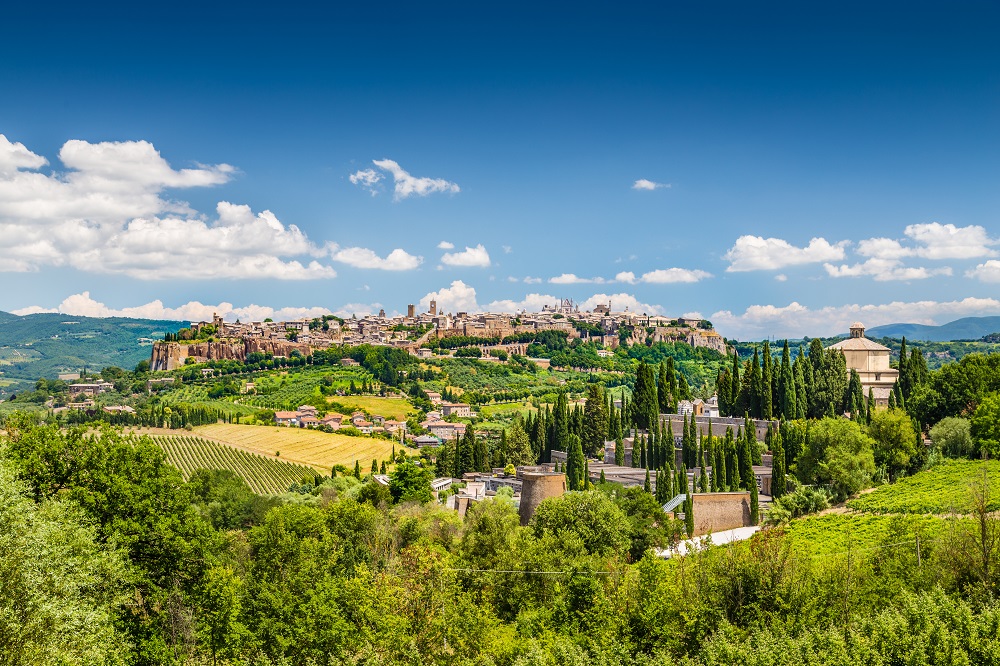
Arneis Grape Variety
November 11, 2022
Explore Arneis: A Fascinating Journey Through Piedmont's Wine Heritage from Ancient Romans to Modern Resurgence
By: James lawrence / Last updated: February 3, 2025
Estimated reading time: 8 minutes
Italy’s wine industry is often viewed as slightly chaotic and rule-adverse by Europe’s more conventional producers. But this isn’t simply a lazy stereotype – the Italians have always challenged regulations and established norms they find irrelevant or outmoded. The Tuscan revolution of the 1970s was built on this rebellious spirit; growers decided to break away from the archaic laws of the Chianti Consorzio, fashioning a new breed of wines that eventually became known as Super Tuscans. Their bravery helped to redefine central Italy in the eyes of collectors, transforming the region into a powerhouse of fine wine.

Guide to Italian White Wine: Read more
Grechetto, the signature white grape of the Umbria region, is another example of this reluctance to play by strict rules. The name refers to two distinct varieties: Grechetto di Todi and Grechetto di Orvieto. Yet growers tend to ignore these differences in labeling and winemaking; a blend of the two varieties is marketed as Grechetto without any further detail. Indeed, even the DOC regulations refuse to distinguish between them. But, as you’ll discover, the wine that emerges can be outstanding.
There are few destinations more evocative than the hills of Umbria. Typically portrayed (with much accuracy) as Tuscany’s less crowded – and glamorous – sibling, the region is steeped in fascinating history. Originally inhabited by a tribe known as the Umbri, the Etruscans eventually subjugated this part of central Italy in 500 BC. Yet they were not responsible for Italy’s viticultural foundations; Greek settlers and traders introduced many different grape varieties in the 8th century BC, including, we assume, Grechetto. Several centuries later, the Romans completed their conquest of Umbria, albeit the Carthaginians came tantalizingly close to seizing control of the territory during the Second Punic War. Nonetheless, the region thrived as a Roman province – trade and agriculture flourished in this fertile land.
However, after the collapse of the Western Roman Empire in 476 AD, Umbria descended into chaos. A number of civilizations fought for control of central Italy, including the Ostrogoths and Byzantines. But it was to no avail: the powerful House of Lombardy invaded Italy and assumed control of much of Umbria. Then, in the mid-8th century, Charles the Great united Western and Central Europe, becoming King of the Lombards in 774. But while much of Italy was absorbed into the Carolingian Empire, certain parts of Umbria remained independent, including several territories controlled by the Papacy. By the 16th century, the Vatican had political hegemony over the length and breadth of Umbria; the region was formerly known as Ducato after the Duchy of Spoleto, a province of Lombardy founded in 570 AD. Papal rule endured until the late 1700s when Napoleon’s armies conquered Italy.
Unfortunately, Umbria’s citizens suffered even more political turbulence in the 19th century. Napoleon’s defeat saw the Catholic Church reassert its dominance over the region, an arrangement that endured until 1860. In that decade, Victor Emmanuel II created the first unified state of Italy, annexing territories throughout the peninsula. The rise of phylloxera, meanwhile, was causing a stir in the vineyards of the southern Rhone. It was inadvertently imported from the US by a team of botanists; this poisonous louse started killing large swathes of vines in the 1870s. However, Italy was spared the worst devastation due to its highly fragmented landscape. In the end, less than 20% of the country’s vineyards were affected by phylloxera. Elsewhere, the early 20th century was defined by a massive and unprecedented replanting program.
Nevertheless, the 1900s witnessed significant economic and cultural change across Umbria. This landlocked region of Italy has wine traditions as ancient as any part of Europe; however, the reputation of Umbrian wine slumped in the mid-20th century. A lack of investment allied to lazy viticulture did Umbria’s image no favors, as the region’s growers churned out barrels of anodyne plonk. Fortunately, pioneers like Dr. Giorgio Lungarotti started revitalizing local winemaking in the late 1970s – Lungarotti’s estate at Torgiano near Perugia was responsible for the rise of a new breed called ‘Super Umbrians.’ The longstanding white wines of Orvieto were also given a vital shot in the arm, benefiting from modern techniques and improved viticulture. Today, there is renewed interest in the Grechetto wines of Orvieto Classico, spearheaded by the winemaking team at Barberani Estate.
Their experience cultivating Grechetto has been invaluable training for estates in Umbria who wish to replant the grape; a great deal was removed in the 1970s to make way for the high-yielding Trebbiano Toscano. However, while Grechetto is renowned for delivering a modest crop, the aromatic profile of both Grechetto di Todi and Grechetto di Orvieto surpasses anything Trebbiano can offer. Moreover, the grapes are endowed with thick skins that defend against fungal diseases such as powdery mildew.
Argillae is a very beautiful wine estate located in the province of Terni. Its owners are long-term proponents of Grechetto (many Umbrians still treat both varieties as one grape) and, therefore, set the standard for handling Grechetto in the winery. In general, Umbrians take inspiration from the Riesling playbook: aromatic finesse is the primary goal, with a strong emphasis on protective winemaking and the exclusion of oxygen. Therefore, the vast majority of wineries eschew oak – especially new – in all stages of the fermentation.
In the case of Argillae, hand-harvested grapes are chilled to preserve freshness before being gently pressed. Good results are achieved when a very pure must is released from the berries, with very limited skin contact and phenolic extraction. The juice is then drained from the press into settling vats and chilled. This allows solid material to fall to the bottom of the tanks. The protected must–sulfur is often added at this stage to prevent oxidation—and is then racked into stainless steel tanks ready for the fermentation to begin.
Historically, a great deal of Umbrian wine (red and white) was vinified in old oak vats. Without due care, a very rustic style of Grechetto would emerge, particularly if the must was not protected against oxidation. Today, though, stainless steel is the vessel of choice. This enables easier regulation of yeast activity via temperature control; Argillae always favors a long, cool fermentation in tank, protecting the grape’s fruitiness and signature aroma. After this process, the winemaker ages the wine on its fine lees for several months. Maturation on the lees (yeast sediment) adds flavor and freshness to the wine. It can also greatly enhance the texture and mouthfeel if the yeast is of sufficiently high quality.
Malolactic fermentation may then occur. This is used to soften aggressively tart malic acid – a side effect of cool and/or difficult vintages. The wine is then filtered and bottled relatively soon after the harvest. However, there are always exceptions in Italy. Barberani, for example, uses a certain percentage of oak for the fermentation and maturation, skillfully integrated into the wine. This is always a delicate balancing act: maturing white wine in oak can overpower the more subtle expressions of Grechetto – stronger wines greatly benefit from it. But new oak is rarely a good idea, regardless of the wine’s provenance.

Sometimes, it’s not easy being Tuscany’s less famous neighbor. While much attention was focused on that region in the latter part of the 20th century, Umbria was (generally) ignored by critics and buyers alike. Indeed, in the early 2000s, non-Italian consumers started to experience these magnificent wines. Yet the potential has always been there: climate and soils vary dramatically, from the cool highlands in the north around Lake Trasimeno to the Mediterranean climate of Terni. Moreover, grape varieties and traditions are distinctively Umbrian. With some notable exceptions, this is a region defined by indigenous grapes and original tastes.
In that spirit, let us introduce you to Orvieto. It is undoubtedly Umbria’s most important white wine appellation – the Etruscans founded Orvieto as a major center of trade and commerce. Today, the appellation boundaries encompass both sides of the Paglia River, stretching from the town of Alviano to the medieval village of Fabro. Historians have always loved the area: the spectacular cellars cut in the rock of Orvieto’s dramatic hilltop 3,000 years ago are examples of ancient temperature control. The local terroir is soft, crumbly limestone, known as tufo in Italy and tuffeau in the central Loire Valley. This porous, cold rock offers vital moisture during the summer months, helping to cool the vine canopy. From the outset, the region has been blessed with a superior terroir.
However, economic pressures encouraged growers to stake their reputation on the high-yielding Trebbiano Toscano in the late 1970s, a grape that typically delivers a generous crop. Unfortunately, the resulting wine was uninspiring.
But today, after a number of false starts, Orvieto is producing a sizable volume of excellent white wine. The most prestigious sub-zone is Orvieto Classico DOCG, based around the original vineyard area. The vines flank the town of Orvieto itself, extending east towards Lake Corbara. Due to a combination of exceptional soils and a massive investment of capital in the early 21st century, the appellation is now making some of the best whites in Italy. Historically celebrated for its botrytis styles, Orvieto’s contemporary success is based on aromatic, steely, and beautifully balanced bone-dry wines. There was a time when all of Italy’s best wines were red, but no longer. Make no mistake: the gap with France is narrowing. Italy has learned how to be a master of all trades.
If you would like us to customize an exclusive luxury tour, contact us and let us know your travel plans. We offer luxury food and wine tours for private groups of a mininium two guests. In addition, all of our private, chauffeured tours are available year-round upon request.

